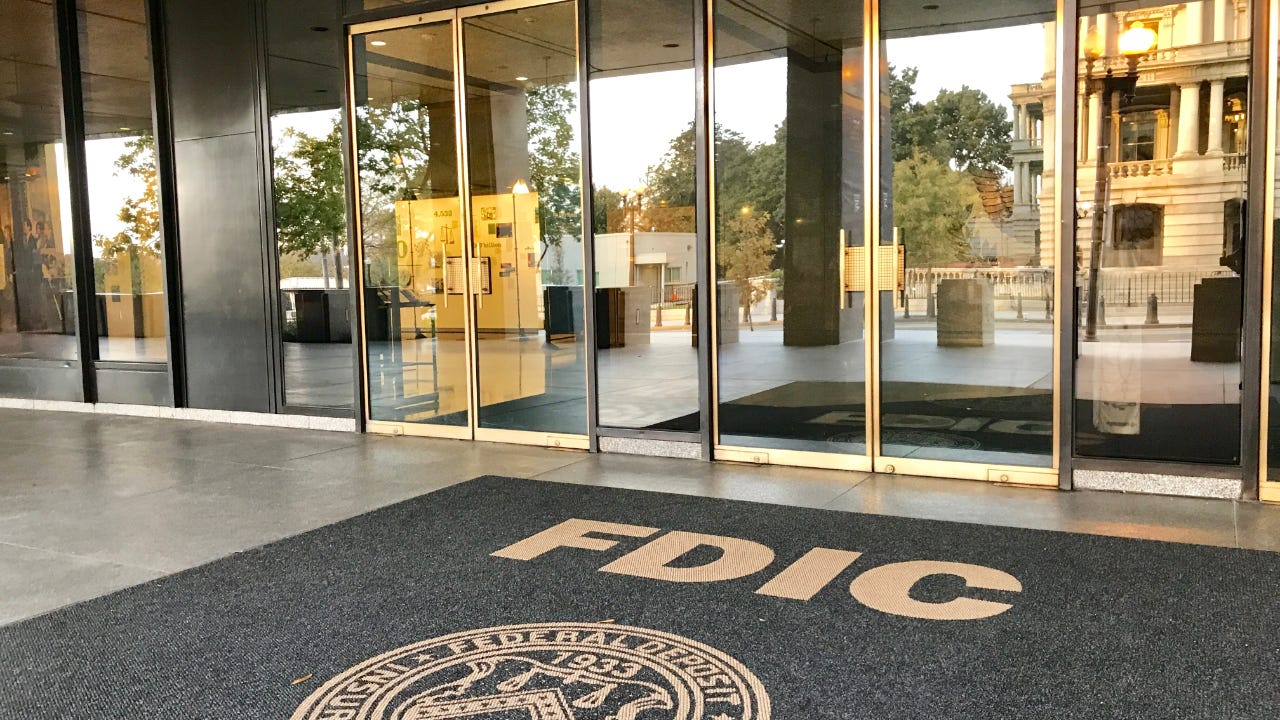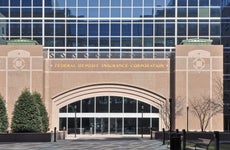What to expect when your bank fails

The Bankrate promise
At Bankrate we strive to help you make smarter financial decisions. While we adhere to strict , this post may contain references to products from our partners. Here's an explanation for .
The failure of First Republic Bank marks the third major bank failure this year, and many consumers are probably wondering: What if my bank fails? It’s not a very common occurrence, but when a bank does fail, account holders may be left with some worry and uncertainty about what will happen to their deposits as well as their account information and how they can move forward.
Banks are generally insured by the Federal Deposit Insurance Corporation (FDIC), which protects up to $250,000. But what are the limitations of federal insurance? And when do you get your money back? Here’s everything you should expect.
What is FDIC insurance?
You may feel fairly confident about the safety of the cash in your bank accounts today, but you would have had serious doubts about that money in the 1930s. Banks were failing left and right during The Great Depression (4,000 suspended operations in 1933 alone), and people watched some of their money disappear when they shut their doors. To restore faith in the banking system, Congress passed The Banking Act, which created the FDIC and offered account holders the reassurance that their money would be safe if their bank failed.
FDIC insurance limits
Today, FDIC insurance guarantees $250,000 for each depositor at each FDIC-insured institution in any of these categories: checking accounts, savings accounts, money market accounts and certificates of deposit. The insurance does not protect money in stocks, bonds, mutual funds, life insurance policies, annuities or securities.
The FDIC also insures different account ownership categories separately. That means that if you have one jointly owned checking account and one single-owned savings account at the same bank, each of those accounts would be insured up to $250,000.
You can use the FDIC’s Electronic Deposit Insurance Estimator tool to calculate how much of your money is protected if you’re unsure.
Single accounts
Let’s say you have three accounts open at your bank with $150,000 in your savings account, $25,000 in your checking account and $75,000 in a CD. All the accounts are listed in your name with no one else on the account, so these all fall under your single account. You have $250,000 in the bank, and all of it is protected by FDIC insurance coverage.
If you have more than $250,000, you can explore other options to keep it covered under the FDIC. For example, you can keep $250,000 at one bank and deposit additional funds at other banks that are also members of the FDIC. Be sure to use the FDIC’s BankFind tool to verify that an institution is covered by the insurance. You can also open an IRA or a revocable trust account, both of which fall under FDIC coverage.
Joint accounts
If you have a joint account with your partner at the same bank, you can enjoy more protection from the FDIC. For example, consider the fictional couple Larry and Sally Jones with $550,000 in the bank.
| Account owners | Account type | Account balance |
|---|---|---|
| Larry and Sally Jones | Savings | $250,000 |
| Larry and Sally Jones | 3-year CD | $300,000 |
The FDIC assigns 50 percent ownership to each person in the joint account. Larry and Sally each have $125,000 of FDIC insurance on the savings account, and they each have $150,000 on their CD account. This means that each of them has $25,000 that exceeds the $250,000 limit and does not qualify for insurance in their joint accounts.
However, if each of them has an individual account in their respective names, each of those accounts enjoys another $250,000 worth of protection. So, they should transfer some of those funds into a single account to keep them safe.
How to find out if your bank failed
There’s nothing to know about the “before” time frame of a bank failure because you won’t receive any heads-up warning that your bank is about to close. Instead, the FDIC works behind the scenes, handling the details and working to find an acquiring bank. Typically, another bank with a better balance sheet takes over the failed bank’s branches and deposits.
“The FDIC notifies each depositor in writing using the depositor’s address on record with the bank,” says LaJuan Williams-Young, a spokesperson for the FDIC. “This notification is mailed immediately after the bank closes. Every effort also is made to inform the public through the news media and notices posted at the bank.”
If you receive a phone call from someone claiming to be with the FDIC, hang up. Williams-Young says the FDIC never contacts depositors by phone. However, you can call the FDIC with questions. Look at the FDIC’s list of failed banks for specific information on individual failures and appropriate contact numbers.
How to get your money back in a bank failure
In most bank failures, you don’t have to do anything to get your money back. You can use your account as you did previously, but it will be at a new bank. If you have direct deposits routed to your account, the FDIC will reroute them to the acquiring bank. You can also continue to use your existing checks for a short period of time, but the acquiring bank will contact you with information about new checks.
What if the FDIC struggles in its matchmaking efforts and fails to find an acquiring bank? Then the FDIC gets out its checkbook.
“If the FDIC was unable to find an acquirer for the failed bank’s deposits, the FDIC conducts a deposit payoff,” Williams-Young says. A deposit payoff means you’ll get paid directly via check by the FDIC, according to the total amount of deposits you had that were insured.
How long will it take to get your money? While the FDIC says that each bank failure is a unique situation, it works to pay back depositors as soon as possible — typically within two business days of the failure.
What happens if you have your money at a credit union that fails? You’re covered, too. Learn more about the National Credit Union Administration, the credit union industry’s equivalent to the FDIC.
What happens to checks and automatic payments?
There are two possible outcomes for what happens to outstanding checks and payment requests when your bank fails. If the failed bank is acquired by another bank, then it’s most likely that offices will open shortly after under new ownership and checks and payments will be processed without interruption — so long as the funds used for the payment were fully covered by FDIC insurance.
In the case of a deposit payoff (when the failed bank is not acquired by another bank), checks and automatic payment requests can’t be charged against the account, since it will be frozen by the FDIC. Outstanding checks and payments will not clear and will instead return unpaid with an indication that the bank is closed.
The good news is that if any of your checks or payments bounce due to a bank failure, it will not reflect on your credit standing. However, you’ll be responsible for finding another way to pay the recipient — such as by writing a new check against a different account.
How can you access branch services?
When a bank fails, some or all of its branches typically reopen the next business day and are accessible to depositors during normal business hours, even though they may not be operating under the same ownership.
After the failure of First Republic Bank, for example, the FDIC stated that all of First Republic’s branches would reopen right away during normal hours as branches of JPMorgan Chase.
In some cases, if the FDIC does not immediately find a buyer for the failed bank, the branches will operate temporarily under FDIC management. Still, customers will be able to perform standard banking transactions and access customer services at their local branch as they would normally.
Bottom line
If you have deposits at a bank that fails, what happens to your money depends on whether it was fully insured and whether the failed institution is acquired by another bank. Generally speaking, you can expect that up to $250,000 will be kept safe in each account ownership category. The funds will either be acquired by a new bank or paid back to you by the FDIC via check.
Remember to look out for any uncleared checks or automatic payments in case the failed bank does not get acquired by a new one — those payments can’t be drawn against a closed account.
— Bankrate’s David McMillin contributed to a previous version of this article.
Related Articles



